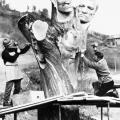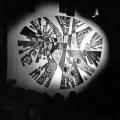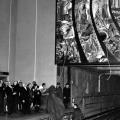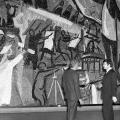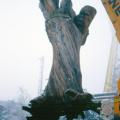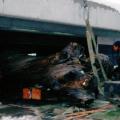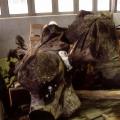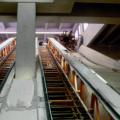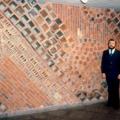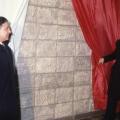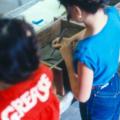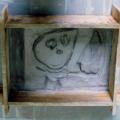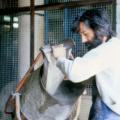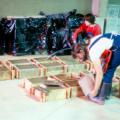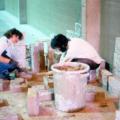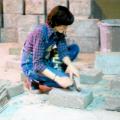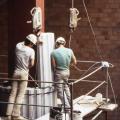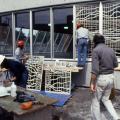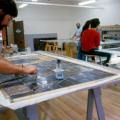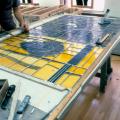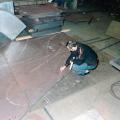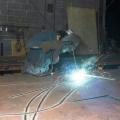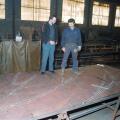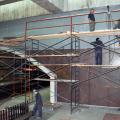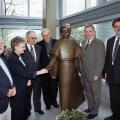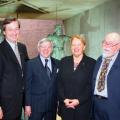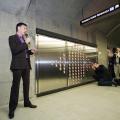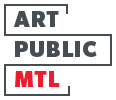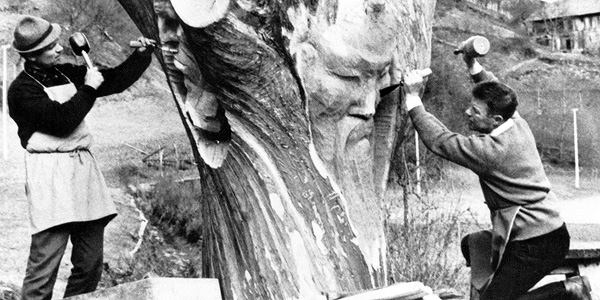
The Tree of Life sculpture being carved by Joseph Rifesser (right, around 1966)
From the start of construction in the early 1960s, designers of the Montréal métro wanted to give it a unique character by hiring several architects to build the stations. Instead of having a series of identical stations, a familiar sight for passengers of most subway systems around the world, transit riders in Montréal would enjoy distinctly designed stations, different from the next. The 26 stations in the initial network in 1966 did not each have a work of art. At the time, the generosity of businesses and organizations was counted upon to finance public art commissions. A work of art was added to a station after it opened, except for station Peel and station Mont-Royal, where their architects were closely involved in their creation.
Painter and caricaturist Robert LaPalme served as artistic director for the integration of artwork in métro stations. He advocated the exclusive use of figurative works depicting the history of Montréal. For Champ-de-Mars, artist Marcelle Ferron held her ground and successfully gained acceptance for a totally abstract work of stained glass, without a doubt one of the most spectacular works of art in the entire network. During the 1970s and 1980s, when métro lines underwent expansion, architects were tasked with integrating art and architecture from a station’s early design stages. Some created the artwork themselves, while the majority commissioned artists, working closely with them during construction. The idea was to ensure a more harmonious mix between art and architecture and give the artwork an appropriate setting, as it deserved. Imposing a theme and excluding abstract art was no longer an option.
When construction began on new STM métro stations in Laval, in the early years after 2000, the Politique d’intégration des arts à l’architecture et à l’environnement des bâtiments et des sites gouvernementaux et publics by the ministère de la Culture et des Communications du Québec served as policy guide for the commissioning of artwork. Through the diverse architecture of its stations and the hundred or so works of art it holds, the Montréal métro serves as an important witness to the different eras that have seen it flourish over time. Several renowned Québec artists have contributed to the métro’s art gallery, including Jean-Paul Mousseau, Charles Daudelin, Frédéric Back, Jordi Bonet, Jacques de Tonnancour and Pierre Granche, to name but a few.
Partner of
